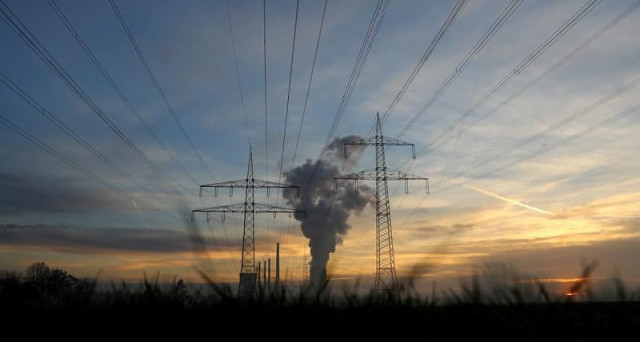Power plants to get ‘RLNG, furnace oil from May’
Ministers say billions of rupees needed to end load-shedding

As the leap in demand for electricity puts pressure on thermal power plants struggling with low fuel inventories, the government faces the pressing issue of pouring billions of rupees to overcome load shedding till June this year.
Trapped in circular debt amounting to Rs2.4 trillion due to poor efficiencies of power firms and low recovery of bills, the country is witnessing the worst electricity shortage that’s expected to persist throughout this summer.
But certain options for the solution in the government's already-shrinking basket seem to come with a negative twin for the government, at least in the short term. If the government decides to increase the power supply, it will translate into an additional burden on the national exchequer on account of subsidies.
Moreover, the higher supplies of electricity would also result in inflated electricity bills due to higher fuel prices which would result in political backlash for the current government.
The circular debt had surged to almost double-figure at Rs2.46 trillion when the PTI government left compared to Rs1.06 trillion in PML tenure.
Speaking at what was his first news conference after taking charge as the federal minister for power engineer, Khurram Dastagir, put the blame on the former ruling party Pakistan Tehreek-e-Insaf (PTI) for the current crisis, saying the previous government had failed to arrange the fuel for power plants.
However, the minister assured the power plants would start getting RLNG supply from May 1 and the required quantity of furnace oil from May 2 to boost power production.
Responding to a question, the minister announced reducing the duration of load-shedding to half in the next 10 days.
However, he added the government would require an amount of Rs108 billion till May 25, Rs136 billion till June 7 and Rs85 billion till June 15 for the power sector to address the issue of load-shedding.
The minister claimed that there was zero load-shedding in the country when the PML-N government had completed its five years tenure on May 31, 2018.
Minister for Power Engineer Khurram Dastagir hoped to witness a visible reduction in power load-shedding during the next 10 days following an enhanced supply of fuel and maintenance of plants.
He disclosed that the shortage of fuel supply and closures of power plants for maintenance purposes had led to power outages across the country. The plants with a total of 5,739 megawatts generation capacity were shut down following a shortage of fuel supply.
They did not have the required fuel of RLNG, coal and furnace oil to generate electricity.
As many as some plants having 2156 MW were also shut down for routine and technical maintenance.
Read Industrialists demand steps to tackle power shortfall
He announced to improve the situation from May 1, as 300MW Engro Power Plant and Port Qasim Power Plants would start producing electricity.
He said the past government did not timely arrange fuel for the power plants causing the power outages.
The minister said the incumbent government under the leadership of Prime Minister Shehbaz Sharif was taking all possible steps to curtail the menace of load-shedding.
The government has already formed teams in all power distribution companies (DISCOs) to address the complaints during Eid.
He said the government had cancelled leaves of staff to cope with any untoward situation. He further added the government had given a revenue target to all DISCOs.It also directed to enforce of all possible steps to stop power theft.
The minister said the DISCOs have been directed to install all pending connections and ensure the prompt solution to consumers' complaints.
Khurram Dastagir regretted the violation of the sanctity of Masjid e Nabvi (Peace Be Upon Him) and said it was a very unfortunate incident. He appreciated the Saudi authorities for taking immediate action.
To a question, he said the board of directors of DISCOs would be revisited. Agreement with K-Electric was on at an advanced stage, he added.
He said low efficient power plants would be phased out with energy-efficient plants.
Shortfall continues to dip
Meanwhile, amid the government's reassurances, the power shortfall across the country exceeded 8,500 megawatts and the fuel supply to power plants could still not be fully restored.
As a result, consumers experienced power outages for 12 hours in most parts of the country, whereas in high-loss areas the load-shedding continued for 18 hours.
The total power generation capacity is 36,016 megawatts, the sources said, sharing 3,500 megawatts was being generated from hydropower while government thermal power plants were generating only 900 megawatts.
Production of private sector power plants stood at 14,000 megawatts, they added.
Sources told The Express Tribune that the Lahore Electricity Supply Company Limited (Lesco) was facing a shortfall of 1000 megawatts while its demands surged to 4700 megawatts.
Consequently, the rural areas falling under the Lesco are witnessing load-shedding of 8 to 9 hours.



















COMMENTS
Comments are moderated and generally will be posted if they are on-topic and not abusive.
For more information, please see our Comments FAQ